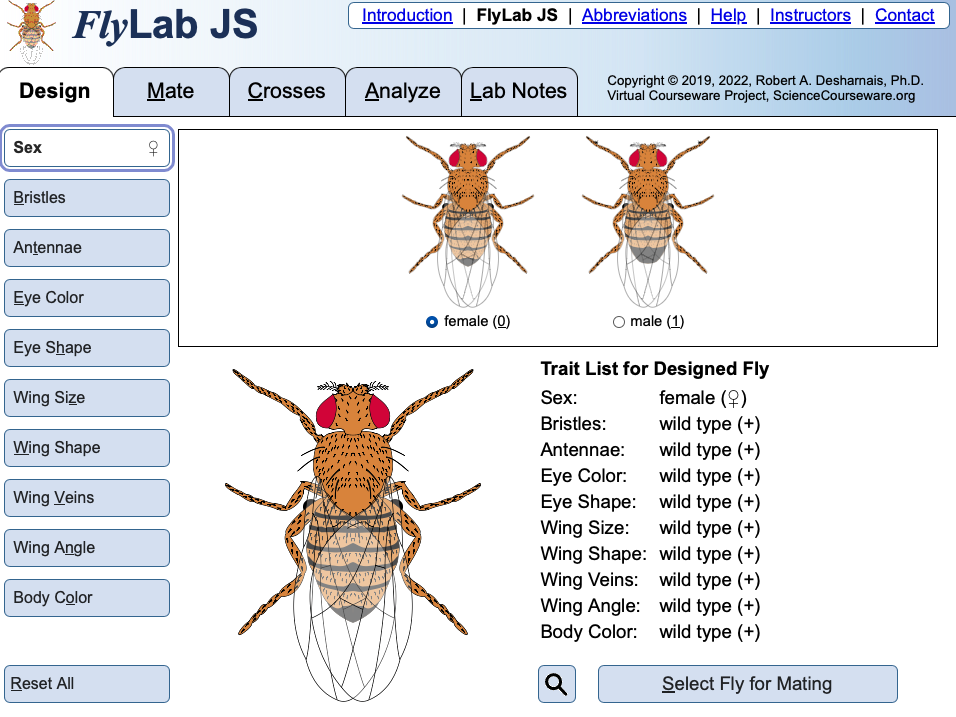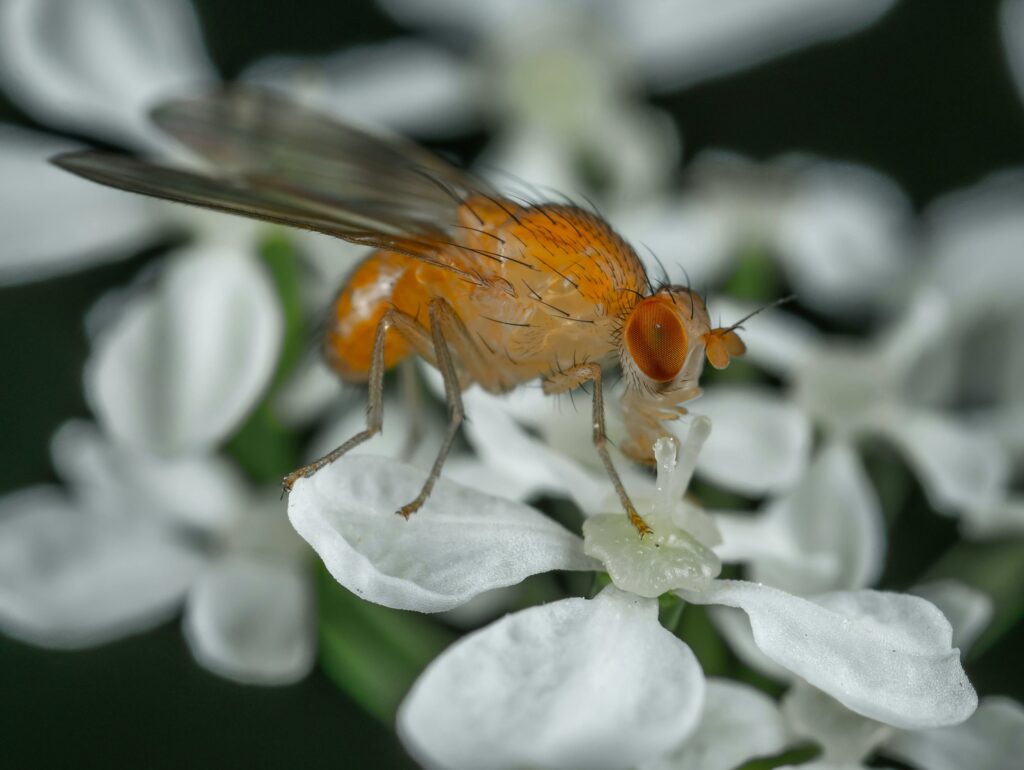Drosophila melanogaster (Common name: Fruit fly or Drosophila)
Genetics is the study of heredity and the variation of inherited traits. Central to this field is understanding how genes, the units of inheritance, are passed from parents to offspring. The field advanced significantly in the early 20th century when Thomas Hunt Morgan used the fruit fly, Drosophila melanogaster, as a model organism to uncover fundamental principles of inheritance.
Thomas Hunt Morgan and His Discoveries
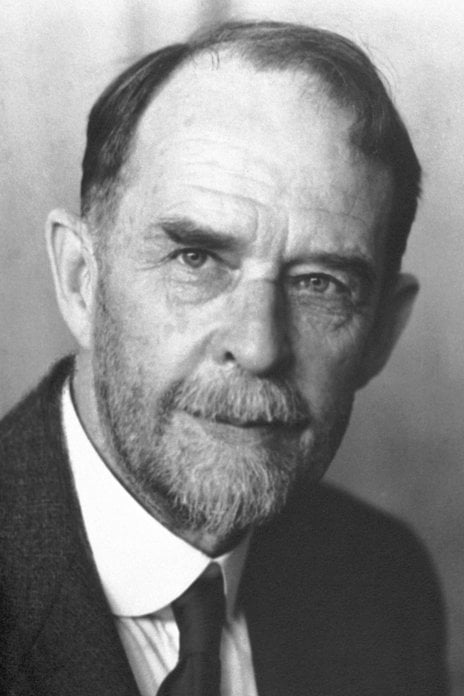
Thomas Hunt Morgan (1866–1945) is a pivotal figure in genetics. Working at Columbia University in his “Fly Room,” he and his team used Drosophila to reveal key genetic principles:
1. The Chromosome Theory of Inheritance
Morgan provided the first solid evidence that genes are located on chromosomes. He demonstrated this by studying sex-linked traits, such as eye color in flies.
• Experiment: Morgan observed that a mutation for white eyes appeared only in male flies when crossed with red-eyed females. This suggested the gene for eye color was located on the X chromosome, linking a specific gene to a specific chromosome.
2. Gene Linkage and Recombination
Morgan also discovered that not all genes assort independently, as suggested by Mendel. Instead, genes located close together on the same chromosome tend to be inherited together. However, crossing-over during meiosis can shuffle linked genes, creating new combinations.
3. Genetic Mapping
Morgan’s work laid the groundwork for creating genetic maps, which show the relative positions of genes on a chromosome. His student Alfred Sturtevant constructed the first such map, based on recombination frequencies.
Why Drosophila melanogaster?

Morgan chose Drosophila for its many advantages:
• Short Generation Time: Fruit flies develop from egg to adult in about 10 days.
• High Fertility: A single female can lay hundreds of eggs.
• Simple Genome: With only four pairs of chromosomes (three autosomes and one pair of sex chromosomes), the genome is relatively easy to study.
• Observable Traits: Flies exhibit visible genetic traits, such as eye color and wing shape, which can be tracked across generations.
Background: In Drosophila melanogaster, two traits are being studied:
1. Body color: Gray body (B) is dominant to black body (b).
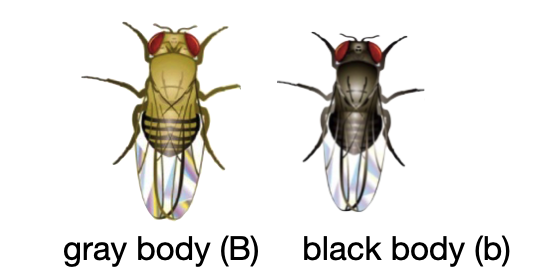
2. Wing shape: Normal wings (N) are dominant to vestigial wings (n).
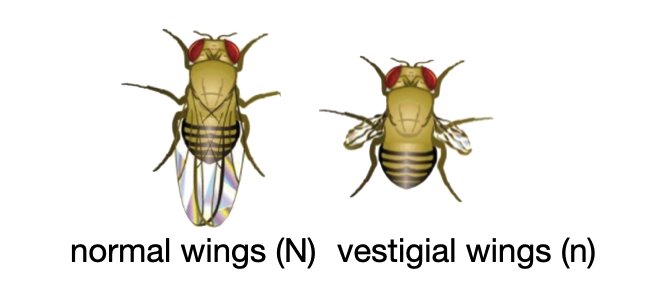
Note: In biology, in France, we saw that for the non-linked genes for body colour and wing length, we used the following allelic abbreviations: eb for black and eb+ for gray, and for wing length Vg for vestigial and Vg+ for long wing.
For the mutant phenotype, we gave it its abbreviation, and for the wild-type phenotype, the abbreviation of the mutant followed by a ‘+’.
A cross is performed between two flies that are heterozygous for both traits (BbNn × BbNn).
Problem:
1. What are the possible genotypes of the offspring?
2. What are the possible phenotypes of the offspring, and in what proportions are they expected?
Solution Guide:
Step 1: Write the parent genotypes.
• Both parents are BbNn (heterozygous for both traits).
Step 2: Determine the possible gametes for each parent.
Each parent can produce the following gametes through independent assortment:
• B and N, B and n, b and N, b and n.
The gametes for each parent are BN, Bn, bN, bn.
Step 3: Set up a Punnett square.
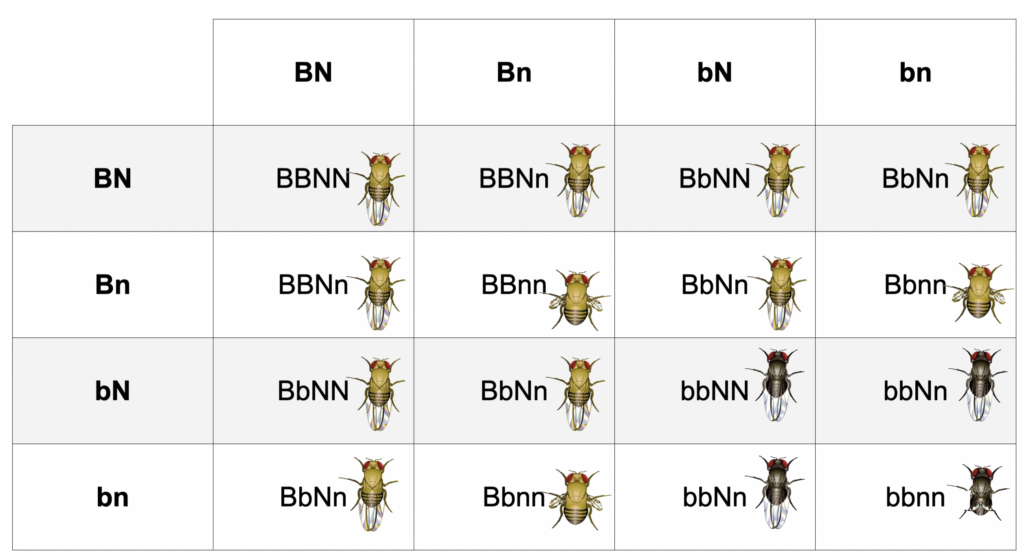
ABSOLUTELY TO SEE: To play with fruitflies crosses: https://www.sciencecourseware.org/FlyLabJS
